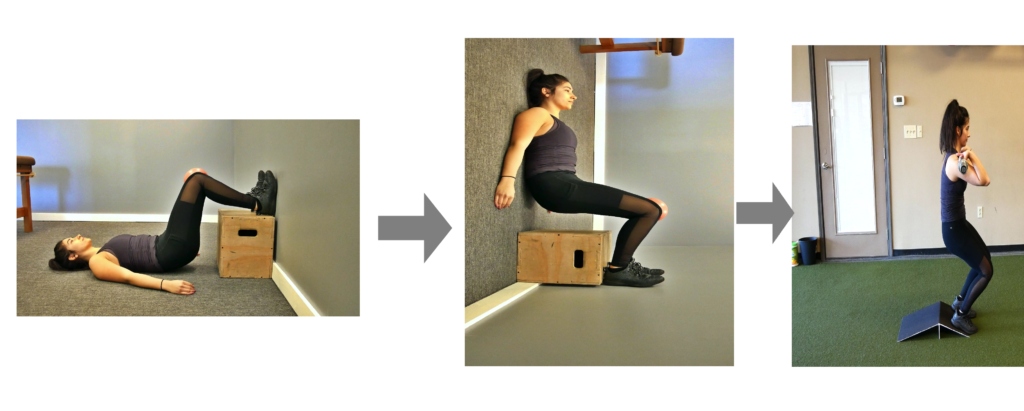Table of Contents
Struggle knowing where breathwork fits?
You might be head over heels for all things breathing, but what if your clients aren’t?
Maybe you are the person who struggles to get buy-in to breathing-based exercises? Or you are unsure where to put it into training. Or maybe you are looking for sneaky ways to incorporate the principles WITHOUT YOUR CLIENTS EVEN KNOWING.
The biggest error peeps make incorporating breathwork into training is making it something separate.
In fact, looking at movement in this fashion is an all-encompassing model. Following principles that go BEYOND BREATHING is a major key.
Don’t worry folks, we will go over those principles, and make it SUPER EASY to get your clients all the benefits with less pushback.
Check out Movement Debrief Episode 136 below to learn how.
Watch the video below for your viewing pleasure, or listen to the podcast if you can’t stand the sight of me 🙁
and the audio version:
If you want to watch these live, add me on Instagram.

 t
tShow notes
Check out Human Matrix promo video below:
Below are some testimonials for the class:
Want to sign up? Click on the following locations below:
February 20th-21st, 2021, Atlanta, GA (Early bird ends January 17th at 11:55 pm!)
April 10th-11th, 2021, Warren, OH (Early bird ends March 14th at 11:55 pm)
May 29th-30th, 2021 Boston, MA (Early bird ends April 25th at 11:55 pm!)
August 14th-15th, 2021, Ann Arbor, MI (Early bird ends July 18th at 11:55 pm!)
September 25th-26th, 2021, Wyckoff, NJ (Early bird ends August 22nd at 11:55 pm)
November 6th-7th, 2021, Charlotte, NC (Early bird ends October 3rd at 11:55 pm)
Dickinson College in Carlisle PA (POSTPONED DUE TO COVID-19) [Approved for 14 Category A CEUs for athletic trainers]
Montreal, Canada (POSTPONED DUE TO COVID-19) [6 CEUs approved for Athletic Therapists by CATA!]
Or check out this little teaser for Human Matrix home study. Best part is if you attend the live course you’ll get this bad boy for free! (Release date not known yet 🙁
Here is a signup for my newsletter to get nearly 5 hours and 50 pages of content, access to my free breathing and body mechanics course, a free acute:chronic workload calculator, basketball conditioning program, podcasts, and weekend learning goodies:
[yikes-mailchimp form=”1″ submit=”Get learning goodies and more”]
How to Coach the Stack – This post outlines one of the most fundamental moves I teach clients
Elevate Sports Performance and Healthcare – The place I work in Las Vegas
Airway Dentistry with Dr. Brian Hockel – All things upper airway, this is THE podcast
Increasing breathing buy-in
Question: I know we talk about when working with a person on breathing, to have them breathe out for 15 seconds or think about blowing out a bunch of candles.
But in pursuit of progression or keeping a client motivated and not bored. What do you find is a good standard to move them to the next progression (pullover to hanging breathing into a balloon)? Is it, you see them able to get abs immediately or are you looking for, say 3 sets of good position and breathing, everything? Is it table tests and you retest and find improved movement?
Getting someone to breathe right can be slow and monotonous, so how can a professional present the roadmap of progression for a client buy-in?
Answer: The biggest error most people make when attempting to build breathing buy-in is to make breathing something different than regular training.
It’s not.
The positions coached during breathing exercises are fundamental components used during training. Think of them as regressions from skills you want clients to be able to perform.
For example, a chair and wall tilt looks a lot like the squat when you tilt it right side up.

Well, consider if you can’t get into the positions we need you to on your back. How well do you think the squat will go? You probably won’t die (except that one time), but you won’t get all that you could from the movement.
The low-level breathing positions help set the stage for the rest of the training program. They build context for what you need to do at higher intensities.
It’s just like if you wanted to play Stairway to Heaven on the guitar, you have to learn to put chords together first. So-to with training. Breathing is the chords, and if you get good at it, you’ll be Jimmy Page in no time!
And if you do them right, many times your clients will get smoked and have a HUGE training effect from them. I can’t tell you the number of times when people get the stack on point how cooked their hamstrings, glutes, and abs will become; key areas that will likely resonate with your clients. If your gen pop client gets the association that these moves build my glutes and abs, then you’ve won.
Ideally, the concept taught in the breathing move would carry over elsewhere to training. So you should see a relative “stack” in most activities your clients perform. In terms of when you focus on different movement qualities, seeing test changes can guide your next focus area. In PT-land, these can change weekly to biweekly. If I’m training someone, it might be every block change.
Now that doesn’t mean that if your client can’t stack that they aren’t allowed to get off the ground. You may just modify your exercise selection to things with a lower error risk. Most people can do iso holds, med ball throws, sled push/pulls, and upper body movements in the sitting position. Select activities with the lowest error risk.
Now I get it, you will have those clients who just won’t be about getting on their back and breathing at all. We all have them. For those peeps, you may just consider working on tucking to “work the glutes and hamstrings” (tell them this because that will better resonate with them) and coaching loaded exercises as best as possible. Just like the above client who doesn’t move well, choose moves that your client will be able to perform with fewer coaching requirements. The best part? Your clients will still be breathing while they train, so you can still get some good movement benefits.
Where should I put resets in the training program?
Question: Is there any value to inserting “movement restorative” exercises/positions in between reset breathing sets to facilitate or further drive the resetting process?
I ask, especially when in coaching breathing to start the session, sometimes the clients are geared up to get into a movement – either from being stimulated to get the work going or from a stressful meeting, etc., so I see the struggle to maintain a degree of focus in accomplishing the reset work.
Answer: Totally! A lot of my programming involves sneaking in these moves during the rest periods for clients. It’ll save them time, keep them loose, work on the movement qualities they need, and potentially enhance recovery.
Aside from choosing the particular resets, they need to work on specific limitations, you can choose activities that will complement the areas being trained.
For example, if someone is doing some heavy upper body stuff, a bar hang could be effective at increasing motion in the upper body.
Or if you have someone squatting, the drunken turtle may enhance depth by reinforcing the positions needed on the squat.
Conditioning for different infrasternal angles?
Question: Would certain types of cardio benefit one postural archetype more than another? If I’m working with a compressed a-p person and a wide ISA person with the same goals, would your cardio choices differ?
Answer: In a perfect world with unlimited equipment, absolutely. Just like we can pick loaded exercises to reinforce particular movements, this doesn’t change whatsoever for conditioning tools.
For example, certain cardio machines may be effective for driving particular movement adaptations:
- Versaclimber: Increase ISA dynamics and frontal plane pelvis mechanics
- Jacob’s ladder: Improve spinal rotation
- Elliptical: Improve spinal rotation
- Airdyne (high seat): Improve spinal rotation with an external rotation bias
- Airdyne (low seat): Improve spinal rotation with an internal rotation bias
- Rowing: Improve squat mechanics
- Sled drags: eccentrically bias posterior ventral cavity.
- Slideboard: Improve frontal plane hip and ankle motion
The options here are limitless, but if you lack the equipment, you might not be able to be that specific.
Don’t worry, your client won’t be doomed to movement failure, there are a myriad amount of other benefits you can get from cardiovascular work aside from movement skills.
Regarding specific energy system adaptation, it depends on what task we are trying to improve. If in the early stages of training, I may bias more cardiac output or extensive tempo intervals; both to build work capacity and because aerobic exercise may enhance learning.
From there, it depends on your client’s goals. If hiking is the prime target, high-intensity continuous training may be a great choice. If they need to be faster for a sport, you may do speed work.
As with anything, look at the demands needed of the terminal task, your client’s movement, and physiological capabilities, and give them what they don’t have.
Sum up
- Breathing is not a special part of training; the positions are taught as components needed for more challenging movements
- Breathing exercises can be used to increase motion or to maintain motion potentially lost from challenging moves
- Conditioning exercises can be chosen to improve motions needed for longer durations.

